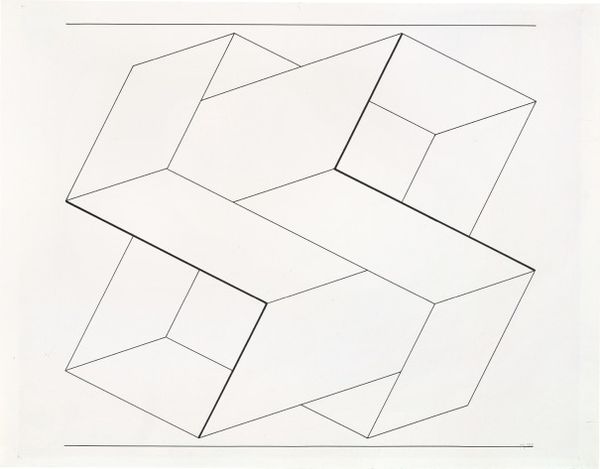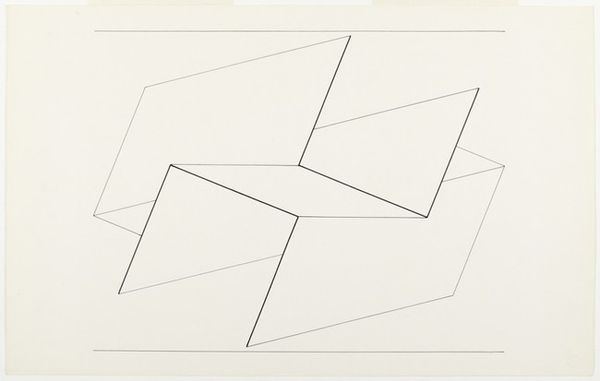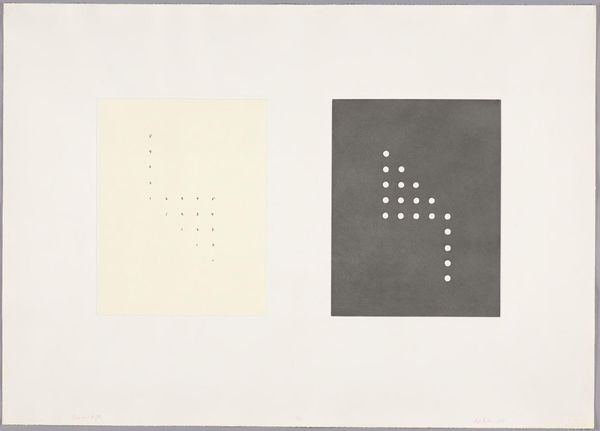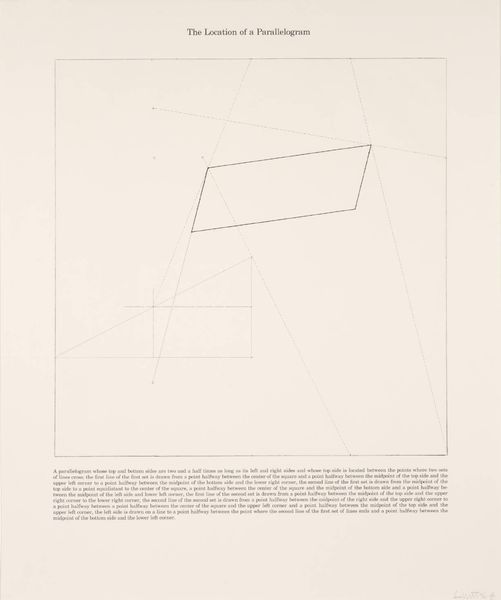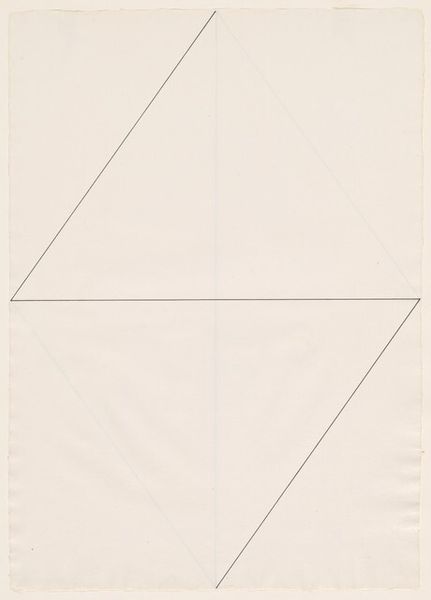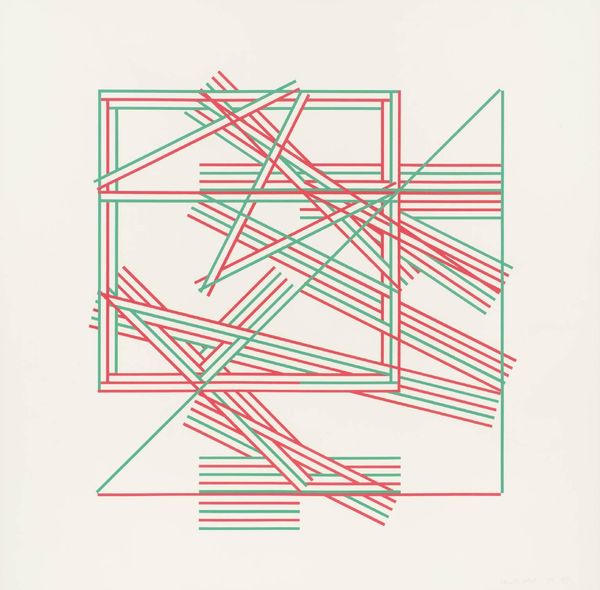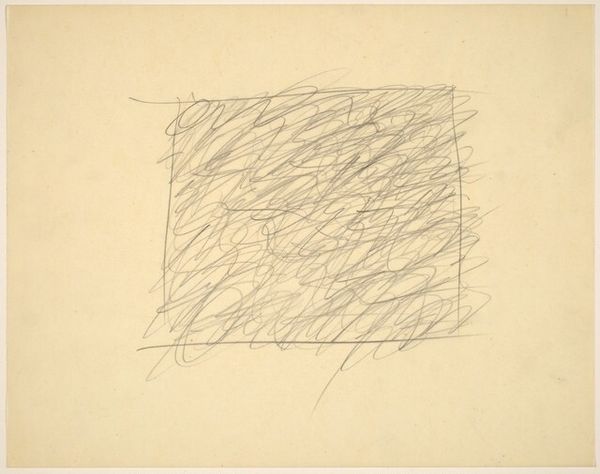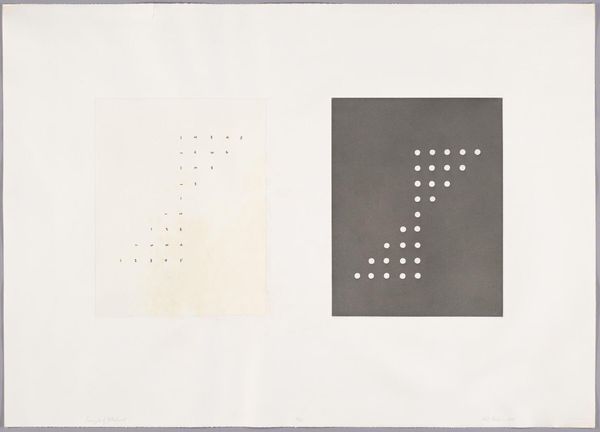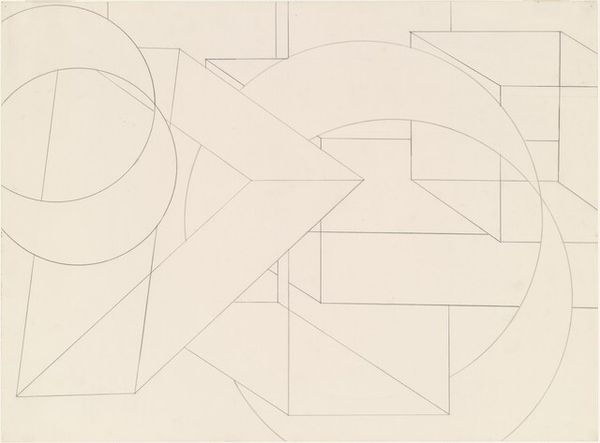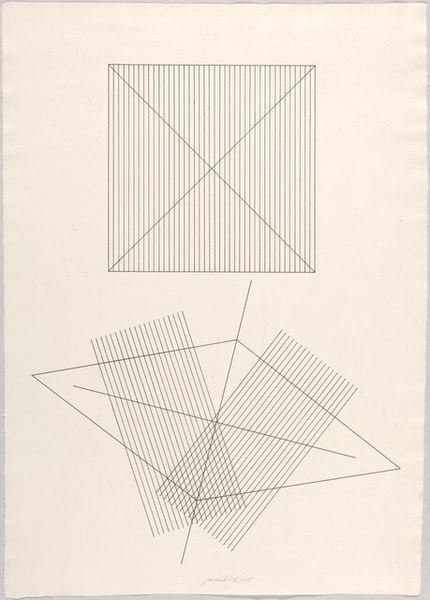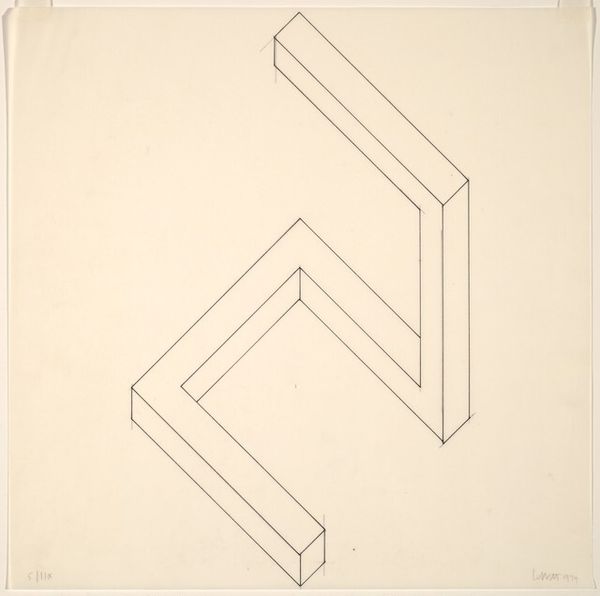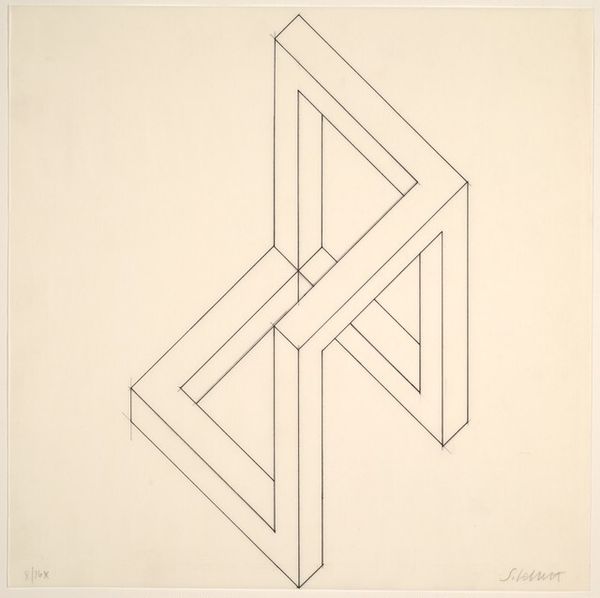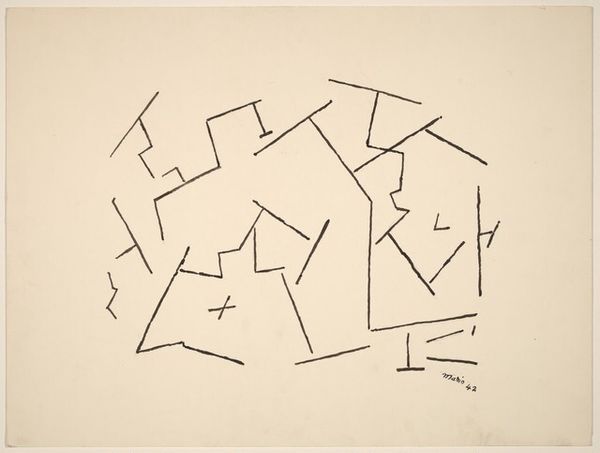
Dimensions: image: 352 x 350 mm
Copyright: © The estate of Justin Knowles/DKRT Investments Corp. | CC-BY-NC-ND 4.0 DEED, Photo: Tate
Editor: Here we have Justin Knowles' "S.157.01", a geometric drawing of triangles forming a square. It looks like simple lines on paper, yet it's strangely compelling. What can you tell me about the materials and process behind this work? Curator: I'm drawn to the very act of its making. Consider the labor involved in its production—the repetitive, precise drawing. How does the artist’s hand and its engagement with such a simple medium affect our perception of "high art?" Editor: That's interesting. So, is the point that the labor itself becomes a statement? Curator: Precisely! It challenges the traditional idea of artistic genius, focusing instead on the materiality and the means of production. This changes how we value and consume art. Editor: I never thought of it that way. Thanks! Curator: My pleasure. It's all about looking beyond the surface.
Comments
Join the conversation
Join millions of artists and users on Artera today and experience the ultimate creative platform.
tate 7 months ago
⋮
Although finished works in their own right, these prints can also be thought of as working models for larger paintings or three-dimensional objects. Knowles overriding concerns were with form, dimension and space, and he realized his works through the application of various systems to a set of ideas, what he called ‘artform concepts’. Knowles often used the same concept, expressed in a combination of forms, to make works in different materials and on different scales, sometimes making work specific to a particular site. S.157iv.01 2002 (Tate P78738) for example, uses similar forms to those in the installation, D.156iv.01/02 2001-2 (National Gallery of Prague).
